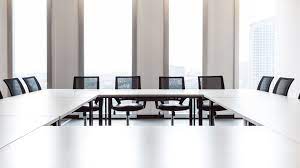Conference tables have long been an essential element in the world of business and professional collaboration. These tables serve as focal points for meetings, discussions, and strategic planning sessions, playing a crucial role in shaping the dynamics of corporate environments. Over the years, the design and functionality of conference table have evolved significantly, reflecting changing workplace trends, technological advancements, and a growing emphasis on aesthetic appeal. In this article, we will delve into the evolution of conference tables, exploring their historical roots, modern adaptations, and the intersection of form and function.
Historical Perspective
The concept of gathering around a table for discussions dates back centuries, with roots in ancient civilizations where councils and assemblies convened to make decisions and discuss matters of importance. In medieval times, large wooden tables were often used for communal gatherings. However, it wasn’t until the Renaissance that the notion of a dedicated conference table took shape, as the emphasis on intellectual discourse and collaboration gained prominence.
During the Industrial Revolution, the need for formal meeting spaces in burgeoning businesses led to the development of more structured and purpose-built conference tables. These tables were often crafted from sturdy materials like wood and featured a simple rectangular or oval design. The focus was primarily on functionality, with little consideration for aesthetics.
The Rise of Functionality
As businesses expanded and communication became more complex, the functionality of conference tables became paramount. In the mid-20th century, with the advent of modern office spaces, conference tables evolved to accommodate technological advancements. The integration of telecommunication equipment, such as telephones and projectors, became a standard feature in conference room setups.
Materials like steel and glass started gaining popularity, reflecting a shift towards more contemporary designs. Modular conference table also emerged, allowing for flexibility in adjusting table configurations based on the size and nature of meetings. Cable management systems were introduced to keep the clutter of wires at bay, contributing to a more organized and efficient workspace.
The Technological Revolution
The 21st century brought about a technological revolution that deeply impacted the design and functionality of conference tables. With the proliferation of laptops, tablets, and smart devices, conference tables began incorporating built-in power outlets, USB ports, and wireless charging capabilities. This integration of technology not only simplified connectivity but also reflected a commitment to a seamless and modern meeting experience.
Interactive whiteboards and video conferencing systems further transformed the landscape of conference tables. Tables equipped with touchscreen surfaces and video conferencing tools allowed for real-time collaboration among geographically dispersed teams. This marked a significant departure from traditional face-to-face meetings, opening up new possibilities for remote collaboration.
Balancing Form and Function
In recent years, there has been a growing recognition of the importance of aesthetics in the workplace. Conference tables are no longer just functional pieces of furniture; they are now considered integral to creating a positive and inspiring work environment. Designers and architects are increasingly focused on striking the right balance between form and function, merging practicality with aesthetic appeal.
Contemporary conference tables come in a variety of shapes, sizes, and materials to cater to diverse preferences and interior design styles. Circular and boat-shaped tables are gaining popularity, fostering a sense of inclusivity and equality among meeting participants. Materials like sustainable wood, glass, and metal are being used not only for their durability but also for their ability to enhance the visual appeal of the workspace.
Ergonomics and Comfort
Another crucial aspect of the modern conference table is its focus on ergonomics and comfort. As meetings often extend for prolonged periods, ensuring that participants can sit comfortably is paramount. Adjustable height tables, ergonomic chairs, and integrated lighting solutions are becoming standard features, contributing to a more conducive and enjoyable meeting environment.
Furthermore, the design of conference rooms as a whole is evolving to prioritize natural light, greenery, and open spaces. This shift towards biophilic design aims to create a healthier and more stimulating atmosphere, enhancing creativity and productivity during meetings.
Conclusion
The conference table, once a utilitarian piece of furniture, has evolved into a sophisticated and multifaceted element of modern workspaces. From its humble beginnings in ancient councils to the technologically advanced and aesthetically pleasing designs of today, the conference table reflects the ever-changing nature of business and collaboration.
As we continue to witness advancements in technology, a greater emphasis on sustainability, and a shift towards more flexible work arrangements, conference tables will likely play a central role in shaping the future of workspaces. The fusion of functionality and aesthetics, combined with a commitment to ergonomics and sustainability, ensures that the conference table remains a vital tool for fostering creativity, collaboration, and innovation in the ever-evolving corporate landscape.

